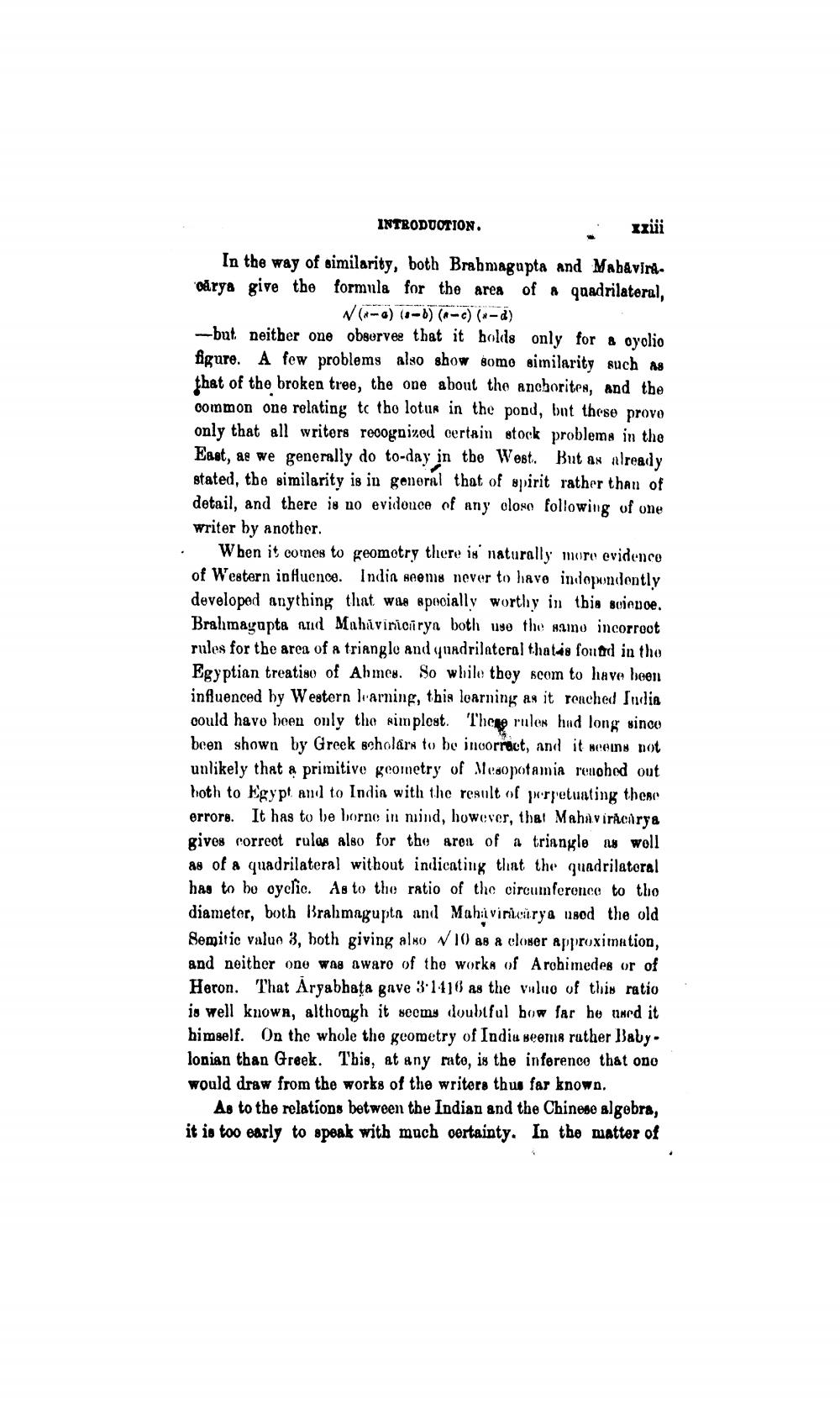________________
INTRODUCTION.
xxü
In the way of similarity, both Brabmagupta and Mabavintdrys give the formula for the area of a quadrilateral,
Wir-a) (1-0) (A-c)(x-2) --but neither one observee that it holds only for & oyolio figure. A few problems also show somo similarity such as that of the broken tree, the one about the anaborites, and the common one relating to tho lotur in the pond, but these provo only that all writers recognized certain stock problems in the East, as we generally do to-day in the West. But as already stated, the similarity is in general that of spirit rather than of detail, and there is no evidouce of any oloso following of one writer by another. · When it comes to geomotry there is naturally more evidence of Western in Huence. Indin seems never to have indopondently developed anything that was specially worthy in this sievoe. Brahmagupta and Mahaviriciryn both use the saino incorroot rules for the area of a triangle and quadrilateral thatés fonod in tho Egyptian treatise of Ahmes. So while thoy scom to have been influenced by Western learning, this loarning as it reached India could have been only the simplest. There rules had long since been shown by Greek scholars to be incorrect, and it seeins not unlikely that a primitive geometry of Mesopotamia reushed out hoth to Egypt and to India with the result of perpetuating these errors. It has to be borne in mind, however, that Mahaviracirya gives correot rules also for the area of a triangle as well as of a quadrilateral without indicating that the quadrilatoral has to be oyclic. As to the ratio of the circumference to tho diameter, both Brahmagupta and Mahi vincarya usod the old Semitic value 3, both giving also V10 as a closer approximation, and neither one was awaro of the works of Archimedes or of Heron. That Aryabhata gave 3.1410 as the vuluo of this ratio is well known, although it seems doubtful how far be used it himself. On the whole the geometry of India seenis rather Babylonian than Greek. This, at any rate, is the inference that ono would draw from the works of the writers thus far known.
As to the relations between the Indian and the Chinese algebra, it is too early to speak with much certainty. In the mattor of




